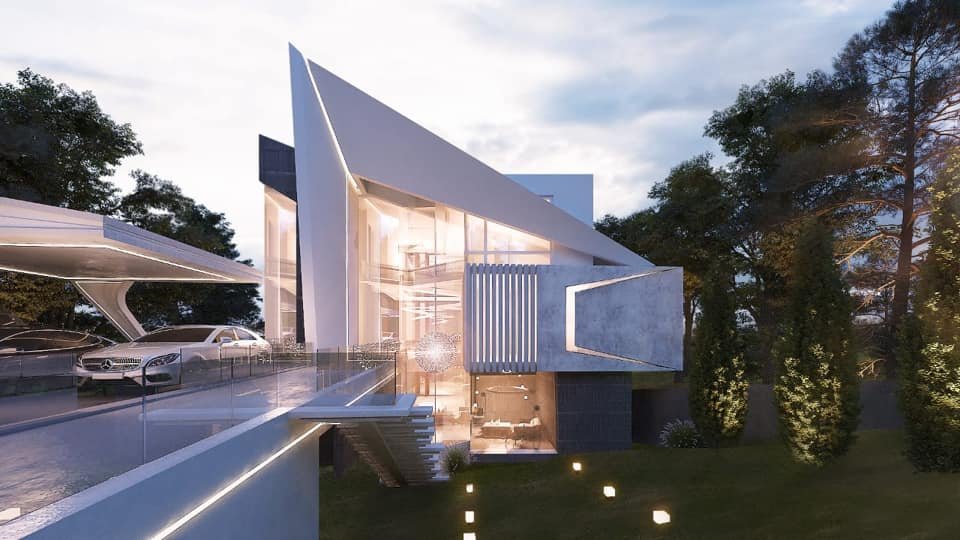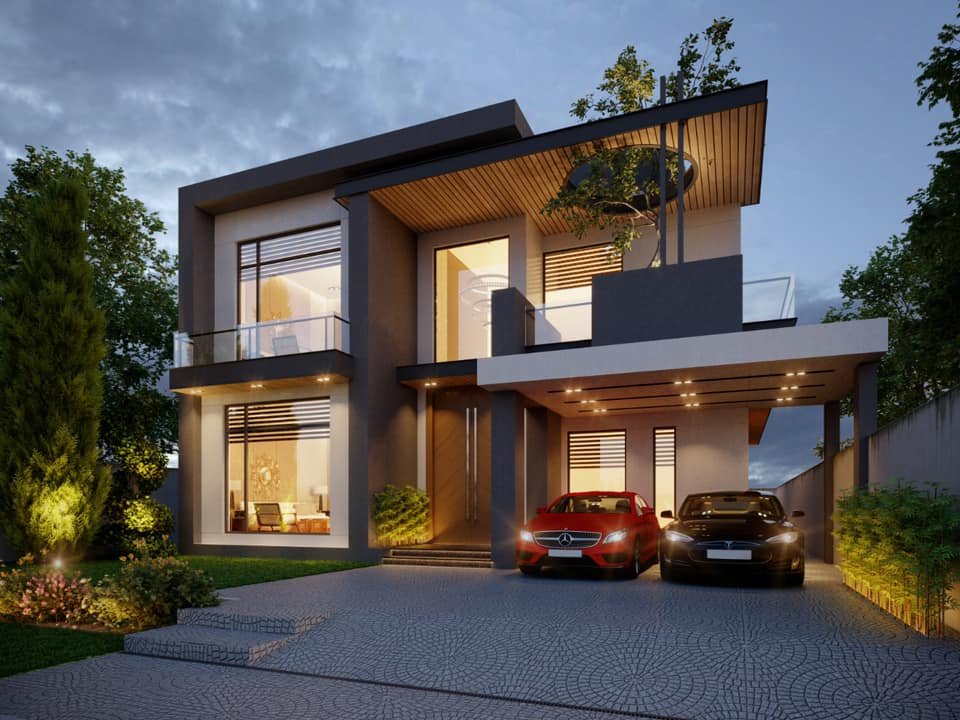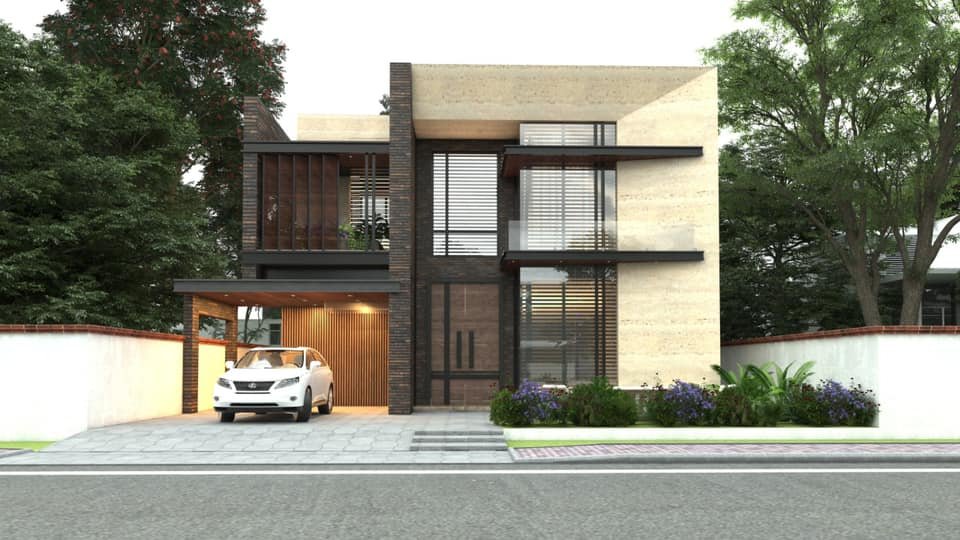
Step-By-Step Guide to Building a House – Construction 2023
Step-By-Step Guide to Building a House
Building your dream house can be an exciting yet challenging endeavor. It’s a project that requires careful planning, dedication, and a solid understanding of the process. In this comprehensive guide, we’ll walk you through every step of building a house, from the initial idea to moving in. Whether you’re a first-time homebuilder or looking for a refresher, this guide will provide valuable insights and tips to make your dream home a reality.
Table of Contents
Dreaming and Planning Your House
- H1: Setting Your Goals and Budget
- H2: Finding the Right Location
- H3: Architectural Styles and Design
- H4: Legal and Zoning Requirements
Getting Your Finances in Order
- H1: Understanding the Costs
- H2: Securing Financing Options
- H3: Budgeting Wisely
- H4: Hiring a Financial Advisor
Designing Your Home
- H1: Working with Architects
- H2: Creating Detailed Plans
- H3: Choosing Materials
- H4: Energy Efficiency Considerations
Obtaining Necessary Permits
- H1: Navigating the Permit Process
- H2: Meeting Building Codes
- H3: Environmental Impact Assessment
- H4: Hiring a Permit Expeditor
Finding the Right Builders
- H1: Selecting a General Contractor
- H2: Subcontractors and Specialists
- H3: Contract Negotiations
- H4: Checking References and Portfolios
Breaking Ground: The Construction Phase
- H1: Excavation and Foundation
- H2: Framing and Structural Work
- H3: Plumbing, Electrical, and HVAC
- H4: Inspections and Quality Control
Interior and Exterior Finishing
- H1: Flooring, Walls, and Ceilings
- H2: Cabinetry and Fixtures
- H3: Roofing and Siding
- H4: Landscaping and Outdoor Spaces
Quality Assurance and Inspections
- H1: Pre-Move-In Inspections
- H2: Resolving Punch Lists
- H3: Final Walkthrough
- H4: Warranty Coverage
Moving In and Settling Down
- H1: Transitioning to Your New Home
- H2: Home Maintenance Tips
- H3: Personalizing Your Space
- H4: Hosting Your First Gathering
Conclusion
- H1: The Joy of Homeownership
Dreaming and Planning Your House
Setting Your Goals and Budget
Before you start building, define your objectives and establish a realistic budget. What kind of house are you dreaming of, and how much can you afford to spend?
Finding the Right Location
Location is key. Consider factors like proximity to work, schools, and amenities when choosing the perfect plot for your new home.
Architectural Styles and Design
Explore various architectural styles and work with a designer to create a blueprint that matches your vision.
Legal and Zoning Requirements
Be aware of local zoning laws and permits required. Consult with local authorities to ensure your project complies with regulations.
Getting Your Finances in Order
Understanding the Costs
Get a detailed breakdown of construction costs, including materials, labor, and contingency funds.
Securing Financing Options
Explore mortgage options, construction loans, and grants to finance your project.
Budgeting Wisely
Create a comprehensive budget, accounting for unexpected expenses and contingencies.
Hiring a Financial Advisor
Consider consulting a financial advisor to help you manage your finances effectively throughout the project.
Designing Your Home
Working with Architects
Collaborate with architects to turn your ideas into detailed blueprints.
Creating Detailed Plans
Develop comprehensive plans that cover every aspect of your home’s design and functionality.
Choosing Materials
Select the right materials to ensure durability and aesthetics.
Energy Efficiency Considerations
Explore energy-efficient options to save on long-term utility bills and reduce your environmental footprint.
Obtaining Necessary Permits
Navigating the Permit Process
Understand the permitting process in your area and secure the necessary approvals.
Meeting Building Codes
Ensure your project complies with local building codes and regulations.
Environmental Impact Assessment
Conduct an environmental impact assessment if required, considering the ecosystem around your construction site.
Hiring a Permit Expeditor
Consider hiring a permit expeditor to streamline the permitting process.
Finding the Right Builders
Selecting a General Contractor
Choose a reputable general contractor with experience in home construction.
Subcontractors and Specialists
Hire specialized subcontractors for tasks like plumbing, electrical, and roofing.
Contract Negotiations
Negotiate contracts carefully, outlining responsibilities, timelines, and payment schedules.
Checking References and Portfolios
Verify the credentials of your builders by checking references and reviewing their previous work.
Breaking Ground: The Construction Phase
Excavation and Foundation
Start with excavation and foundation work, setting the strong base for your home.
Framing and Structural Work
Witness your home take shape as framing and structural elements come together.
Plumbing, Electrical, and HVAC
Install crucial systems like plumbing, electrical, and HVAC.
Inspections and Quality Control
Regular inspections and quality control checks are essential to maintain construction standards.
Interior and Exterior Finishing
Flooring, Walls, and Ceilings
Transform the interiors with finishes like flooring, walls, and ceilings.
Cabinetry and Fixtures
Install cabinets, fixtures, and appliances to make your house a home.
Roofing and Siding
Protect your investment with quality roofing and siding.
Landscaping and Outdoor Spaces
Enhance your property with landscaping and outdoor amenities.
Quality Assurance and Inspections
Pre-Move-In Inspections
Conduct thorough inspections before moving in to catch any issues early.
Resolving Punch Lists
Address any remaining tasks on the punch list promptly.
Final Walkthrough
Complete a final walkthrough to ensure everything meets your expectations.
Warranty Coverage
Understand your warranty coverage and keep records of all warranties.
Moving In and Settling Down
Transitioning to Your New Home
Transition smoothly into your new home, unpacking and organizing.
Home Maintenance Tips
Learn essential home maintenance tasks to keep your house in top shape.
Personalizing Your Space
Add your personal touch through decoration and customization.
Hosting Your First Gathering
Celebrate your new home by hosting a gathering for family and friends.
Conclusion
Building your own house is a rewarding journey filled with challenges and triumphs. It’s a step-by-step process that begins with a dream and culminates in the realization of a lifelong goal. While it may be daunting at times, the joy of homeownership and the satisfaction of living in a space you’ve created are unparalleled. Remember, every decision you make, from the initial planning to the finishing touches, contributes to the unique character of your home.
FAQs (Frequently Asked Questions)
How long does it take to build a house from start to finish?
- The timeline for building a house varies, but on average, it takes around 6 to 12 months.
What should I prioritize when designing my dream home?
- Prioritize functionality, energy efficiency, and the features that matter most to you and your family.
Is it necessary to hire an architect for a custom home design?
- While it’s not mandatory, working with an architect can help bring your vision to life and ensure structural integrity.
How can I find reliable builders for my project?
- Seek recommendations from friends, read online reviews, and check references to find reputable builders.
What maintenance tasks are essential for a newly built home?
- Regularly inspect and maintain plumbing, electrical systems, and the foundation. Also, keep up with landscaping and exterior maintenance.
Step-By-Step Guide to Building a House
Introduction
So, you’ve decided to embark on the exciting journey of building your dream home from the ground up? Congratulations! While it may seem like a daunting task, with the right plan and guidance, constructing your house can be a rewarding adventure. In this comprehensive guide, we’ll walk you through the step-by-step process of building a house, from the initial planning stages to moving in and making it your own. Let’s dive in!
Table of Contents
- Choosing the Perfect Location (H1)
- Selecting a Suitable Neighborhood (H2)
- Assessing Land Quality (H2)
- Designing Your Dream Home (H1)
- Creating a Wishlist (H2)
- Hiring an Architect (H2)
- Obtaining Necessary Permits (H1)
- Local Regulations (H2)
- Building Permits (H2)
- Budgeting and Financing (H1)
- Setting a Realistic Budget (H2)
- Securing a Mortgage (H2)
- Selecting the Right Builders (H1)
- Contractor Research (H2)
- Checking References (H2)
- Foundation and Framing (H1)
- Excavation and Footings (H2)
- Framing the Structure (H2)
- Utilities and Infrastructure (H1)
- Electrical and Plumbing (H2)
- Heating and Cooling (H2)
- Interior and Exterior Finishes (H1)
- Flooring and Wall Coverings (H2)
- Roofing and Siding (H2)
- Quality Inspections (H1)
- Ensuring Compliance (H2)
- Addressing Issues (H2)
- Landscaping and Outdoor Spaces (H1)
- Creating Curb Appeal (H2)
- Outdoor Living Areas (H2)
- Interior Furnishing (H1)
- Personalizing Your Space (H2)
- Furniture and Decor (H2)
- Final Inspections and Approvals (H1)
- Safety and Code Compliance (H2)
- Certificates of Occupancy (H2)
- Moving In (H1)
- Organizing the Big Move (H2)
- Settling into Your New Home (H2)
- Maintaining Your Home (H1)
- Regular Maintenance Tasks (H2)
- Dealing with Repairs (H2)
Choosing the Perfect Location
Selecting a Suitable Neighborhood (H2)
The first step in building your dream home is choosing the right neighborhood. Consider factors like proximity to work, schools, and amenities. Research crime rates, property values, and the overall vibe of the area to ensure it aligns with your lifestyle and preferences.
Assessing Land Quality (H2)
Once you’ve pinpointed a neighborhood, assess the quality of the land you want to build on. Is it prone to flooding or other environmental hazards? Consult with local experts to ensure your chosen location is suitable for construction.
Designing Your Dream Home
Creating a Wishlist (H2)
Envision your ideal home by creating a wishlist of features and functionalities. Think about the number of bedrooms, layout, and any specific design elements you desire. This will serve as a valuable reference when working with an architect.
Hiring an Architect (H2)
Collaborating with an architect is crucial to turn your vision into blueprints. Choose an architect who understands your needs and preferences. They’ll help you design a home that not only meets your expectations but also complies with local building codes.
Obtaining Necessary Permits
Local Regulations (H2)
Navigating local regulations can be complex. Familiarize yourself with zoning laws and building codes in your area. Understanding these rules is essential before proceeding with any construction plans.
Building Permits (H2)
Once you have a design in place, apply for the necessary permits. These permits ensure that your project meets safety standards and adheres to local regulations.
Budgeting and Financing
Setting a Realistic Budget (H2)
Create a detailed budget that covers all aspects of your home construction, from materials and labor to unexpected expenses. Having a clear financial plan will help you stay on track throughout the project.
Securing a Mortgage (H2)
If you’re not financing the project with cash, secure a mortgage that suits your budget and needs. Shop around for competitive rates and terms.
Selecting the Right Builders
Contractor Research (H2)
Thoroughly research and interview potential contractors. Consider factors like experience, reputation, and pricing. A reliable builder is essential for a successful construction project.
Checking References (H2)
Ask for references and check past projects to gauge the quality of the builder’s work. Contact previous clients to get insights into their experience working with the contractor.
Foundation and Framing
Excavation and Footings (H2)
The foundation is the backbone of your home. Ensure proper excavation and footing installation to create a stable base for your structure.
Framing the Structure (H2)
Framing involves erecting the skeleton of your home. It’s a critical phase that sets the stage for all subsequent construction work.
Utilities and Infrastructure
Electrical and Plumbing (H2)
Install electrical and plumbing systems to meet your household’s needs. Hiring licensed professionals for these tasks is crucial to ensure safety and compliance.
Heating and Cooling (H2)
Choose an efficient heating and cooling system that provides comfort while keeping energy costs in check.
Interior and Exterior Finishes
Flooring and Wall Coverings (H2)
Select flooring and wall coverings that align with your design preferences. Consider durability and maintenance when making choices.
Roofing and Siding (H2)
Protect your home from the elements with quality roofing and siding materials. Proper installation is key to a leak-free and well-insulated home.
Quality Inspections
Ensuring Compliance (H2)
Regular inspections during construction ensure that your home is being built according to the approved plans and local regulations.
Addressing Issues (H2)
If any issues or deviations are detected during inspections, address them promptly to maintain the integrity of your home.
Landscaping and Outdoor Spaces
Creating Curb Appeal (H2)
Enhance the aesthetic appeal of your property by landscaping the front yard. Well-planned landscaping can also improve property value.
Outdoor Living Areas (H2)
Consider creating outdoor living spaces, such as patios or decks, to enjoy the outdoors and entertain guests.
Interior Furnishing
Personalizing Your Space (H2)
Once construction is complete, personalize your space with paint, decor, and furnishings. Make it truly feel like home.
Furniture and Decor (H2)
Select furniture and decor that complement your home’s design and reflect your personal style.
Final Inspections and Approvals
Safety and Code Compliance (H2)
Before moving in, ensure that your home meets all safety and code requirements. This includes fire safety, electrical systems, and more.
Certificates of Occupancy (H2)
Obtain the necessary certificates of occupancy from local authorities to legally occupy your new home.
Moving In
Organizing the Big Move (H2)
Plan and execute a smooth move-in process by organizing your belongings and enlisting the help of professionals if needed.
Settling into Your New Home (H2)
Take the time to settle in and make your new house a home. Get to know your neighbors and embrace your new community.
Maintaining Your Home
Regular Maintenance Tasks (H2)
Keep your home in top condition by performing regular maintenance tasks, from cleaning to checking for leaks and wear.
Dealing with Repairs (H2)
When repairs are needed, address them promptly to prevent further damage and ensure the longevity of your home.
Now that you have a step-by-step guide to building your dream home, you’re ready to embark on this exciting journey. Remember that patience and attention to detail are key, and don’t hesitate to seek professional guidance when needed. Happy building!
Frequently Asked Questions (FAQs)
1. How long does it typically take to build a house from start to finish?
- The timeline for building a house can vary widely depending on factors such as the size of the home, complexity of the design, weather conditions, and local regulations. On average, it can take anywhere from six months to over a year to complete a new home.
2. What are some common challenges people face when building a house?
- Common challenges include budget overruns, delays in construction, weather-related setbacks, and navigating the complexities of obtaining permits and approvals. It’s essential to be prepared for unexpected obstacles and plan accordingly.
3. Can I build a house without hiring an architect?
- While it’s possible to build a house without an architect, hiring one is highly recommended, especially for custom-designed homes. An architect can help you translate your ideas into practical plans, navigate building codes, and ensure the structural integrity of your home.
4. What are the key factors to consider when choosing a builder for my home?
- When selecting a builder, consider factors such as their experience, reputation, past work, licensing, and communication skills. Request references and
- Choosing the Perfect Location (H1)
- Regularly inspect and maintain plumbing, electrical systems, and the foundation. Also, keep up with landscaping and exterior maintenance.




